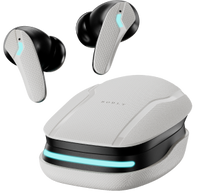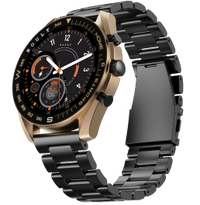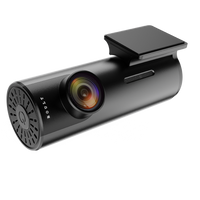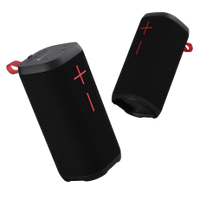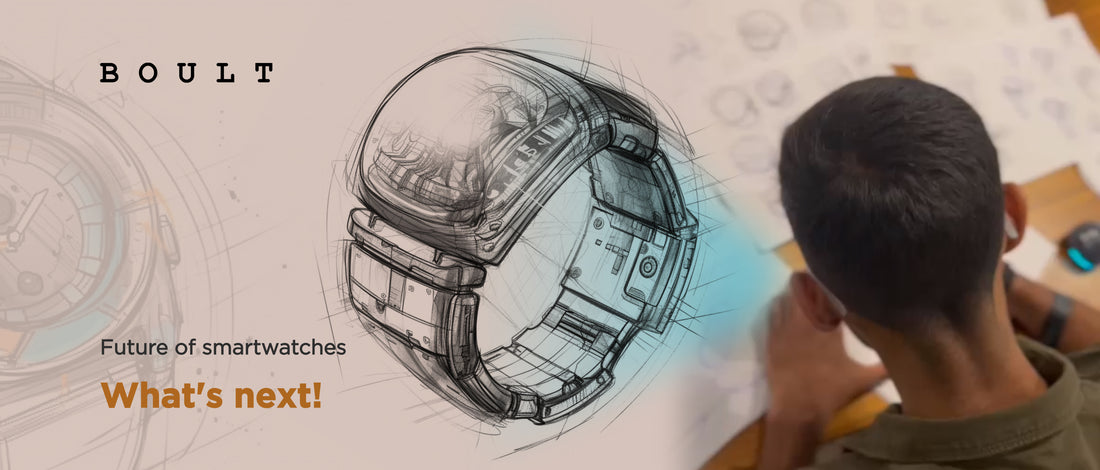Are you ready for the next generation of wearables? Smartwatches have come a long way since their inception and are now an essential tech accessory for many. But what's next in store for these wrist gadgets? From health monitoring to augmented reality, this blog post explores the future possibilities of smartwatches that will leave you excited and intrigued about what's to come. So, fasten your seatbelt and join us as we embark on a journey into the exciting world of smartwatch technology.
The History of Smartwatches
The first smart watch, or you can say first digital watch was created in 1972 by the Pulsar company, a subsidiary of the watch manufacturer Seiko. The Pulsar led the way for other companies to create their own versions of the smartwatch, and by the early 1990s, there were several different smartwatches on the market.
However, it wasn't until 2009 that the concept of the modern smartwatch really took off, with the release of the Pebble Watch. The Pebble Watch was a game-changer in the wearable tech industry, as it was one of the first watches to use a color e-paper display. This made it much more user-friendly than previous smartwatches, which had monochrome displays.
Since then, there have been many other advances in smartwatch technology. In 2013, Samsung released the Galaxy Gear, which was one of the first smartwatches to run on Android. And in 2014, Apple released its much-anticipated Apple Watch.
The Apple Watch was a major step forward for smartwatches, as it introduced new features like built-in GPS and cellular connectivity. It also had a much more powerful processor than any other smartwatch at that time.
Since then, there have been many other iterations of the Apple Watch and other Android-powered smartwatches from companies like Samsung and LG. But these smartwatches were very expensive and only a few people could afford them. To solve this problem, especially in India, many brands started to provide affordable yet high-quality smartwatches with advancement in the technologies. Boult is one of them. And we can expect even more advances in the coming years.
Future of Smartwatches
Smartwatches are still a relatively new technology, and as such, the future of smartwatches is still very much up in the air. However, there are a few things that we can expect from the next generation of smartwatches.
One thing we can expect is for smartwatch to become more and more like traditional watches. This means that they will likely become slimmer and lighter, with better battery life. Additionally, they will probably become more water-resistant and durable, making them ideal for even more activities.
We can also expect smart watches to become more functional and feature-rich. We may see features like GPS tracking, heart rate monitoring, and even blood pressure monitoring with better accuracy built into future smartwatches. Additionally, we may see new features such as contactless payments, music playback, and even voice control. Some of these features can be seen now as well.
Finally, we can expect prices of smartwatches to come down over time as the technology becomes more refined and widespread. This means that eventually, everyone will be able to afford a smartwatch - making them truly ubiquitous devices.
How Smartwatches will Evolve
With advanced innovations, Smartwatches have come a long way offering a lot of futuristic features. However, there is still room for improvement and the next generation of smartwatches will be even more advanced. Here’s a look at some of the features we can expect to see in the next generation of smartwatches:
1. Better Battery Life
One of the biggest complaints about some current smart watches is that the battery doesn’t last long enough. This is due to all the power-hungry features that are packed into these tiny devices. The next generation of smartwatches will address this issue with better battery life.
2. More Powerful Processors
As smartwatches become more powerful, they will need more capable processors to handle all the tasks they are being asked to perform. We can expect faster and more powerful processors in the next generation of smartwatches.
3. Improved Display Technology
Another area where smart watches have been lagging behind is in display technology. The displays on current devices are often difficult to read in direct sunlight and don’t offer a lot of resolution. This is something that will be addressed in the next generation of smartwatch with improved display technology.
What to Expect from the Next Generation of Smartwatches
The next generation of smartwatches is likely to be even more powerful and feature-rich than the current crop of devices. We can expect to see faster processors, more memory, and improved sensors. These watches will also probably run a wider range of apps and offer better integration with smartphones. As smartwatches get more sophisticated, we can expect to see them become more customizable, with user-replaceable straps and faces.
So, what does this all mean for the future of smartwatches? We can expect them to become even more indispensable tools for our daily lives.
In a Nutshell
As technology advances, so too do the capabilities of smartwatches. We can expect to see more features and functionalities added in the future, making them even more useful than they currently are. The next generation of wearables could open up a whole new world of possibilities for users, allowing them access to data and insights that will help them live healthier and happier lives. With advancements in battery life, design aesthetics, and integration with other devices becoming increasingly common, it's clear that the future of smart watches is an exciting one.
Here is a list of best Smart watch you can go for:
Rover Ultra - 1.43” Super AMOLED Display and 120+ sports modes.
Rover Pro - 1.43" HD Super AMOLED Screen with Always on Display
Ripple Pro - Zinc Alloy Frame and 750 nits High Brightness with AOD
Drift 2 - 1.85" HD Display with Working Crown
Drift Pro - 1.78" Amoled screen, 800 nits, 150+ cloud watch faces.

